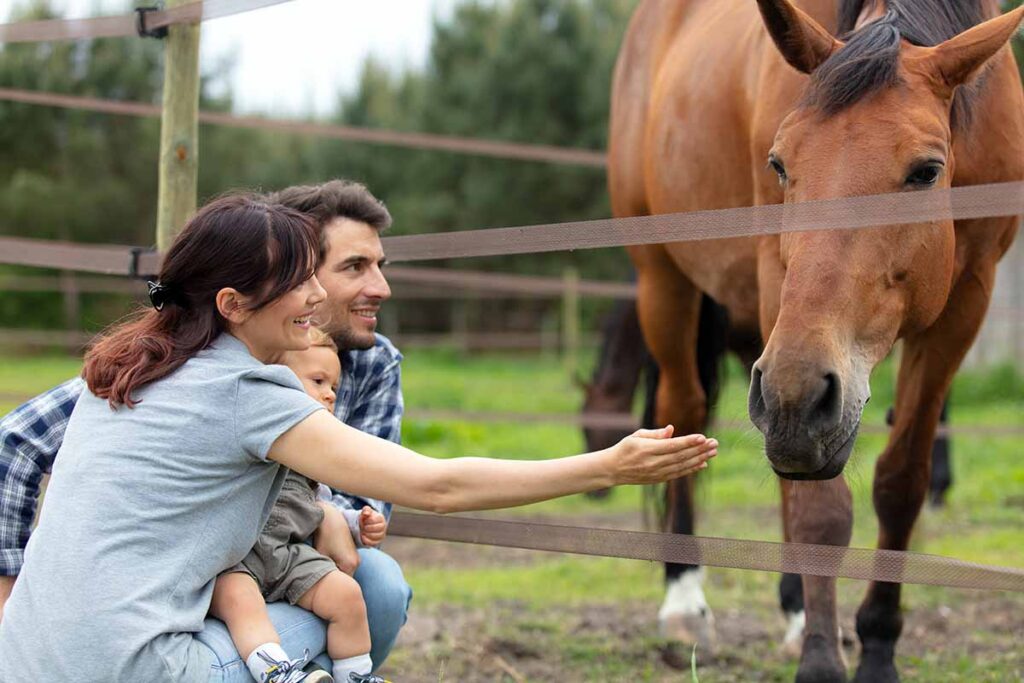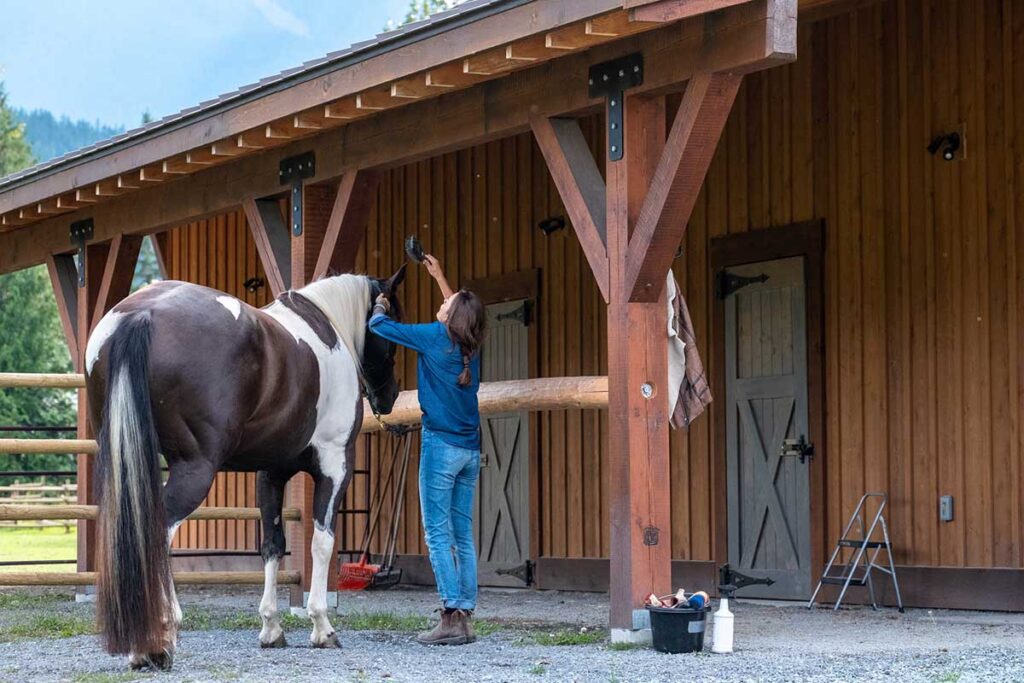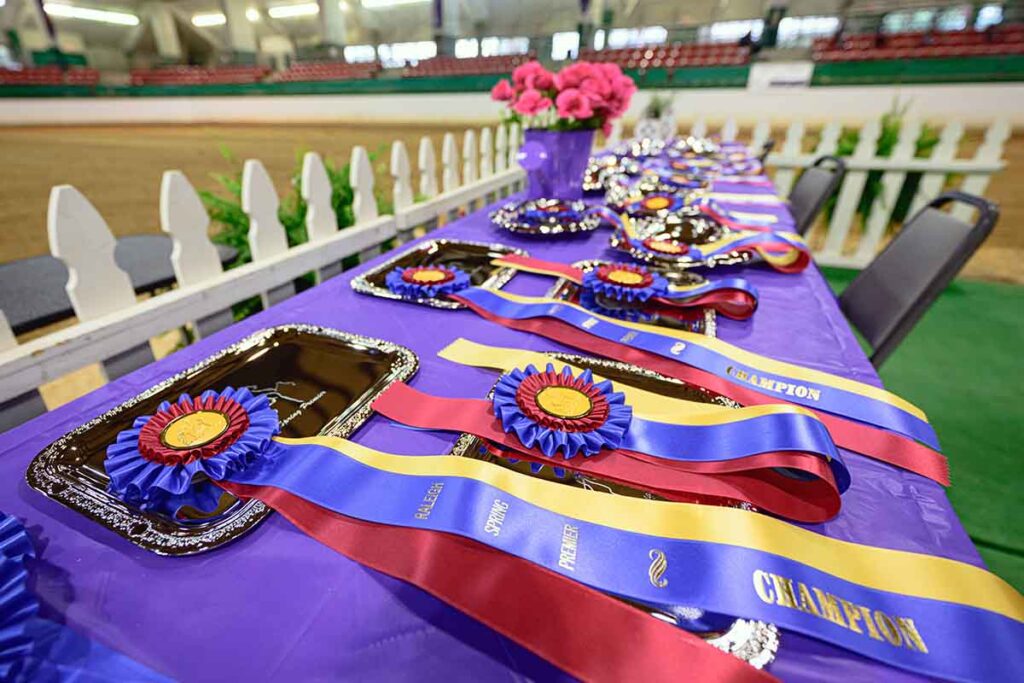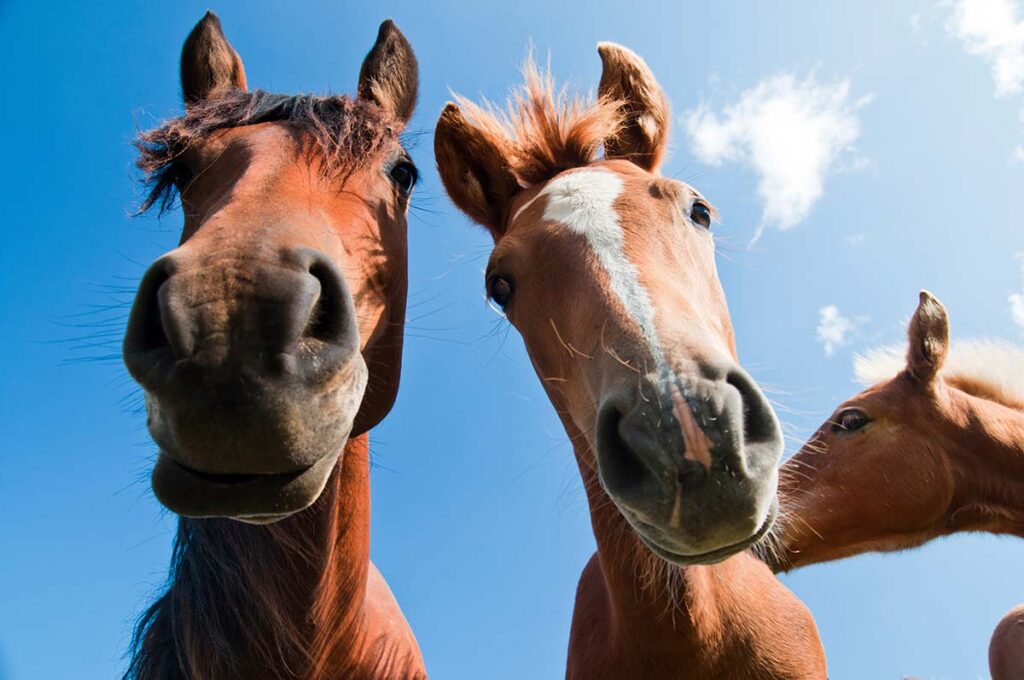Have you ever wondered why the horn on that barrel saddle’s so tall or the seat on that dressage saddle so deep? While Western and English saddles look strikingly different from one another and serve various purposes, they share basic design goals of rider security and horse and human comfort. Whether you’re trying to find the perfect fit for your riding needs or simply want to learn the differences between saddle types, we’ve got you covered with our guide to these two popular types of saddles.
Western Types of Saddles

The Western saddle was designed for cowboys who spent long days riding the range, driving, and working cattle. Leather Western saddles are much heavier than English saddles, but the weight of both the saddle and the rider is spread over a larger area of the horse’s back, which makes it less tiring for the horse. The contoured cantle, the fenders, and stirrups keep the rider secure and comfortable in the saddle. The most obvious feature is the horn, which the rider uses when working cattle.
Western saddles are built on either wooden trees covered in fiberglass or rawhide or a material called ralide, which is a polyethylene. Most are covered with leather, although lighter-weight synthetic saddles are also available. The seat is often covered with split leather or suede. The lining underneath the saddle can be sheepskin, wool, or acrylic. Many Western saddles are decorated with ornate stitching and carving in the leather and/or silver accents.
While to the uninitiated all Western saddles might look alike, specialty saddles for pleasure or trail, roping, reining, barrel racing, and more all have slightly different features (such as a more or less pronounced horn, different balance, etc.) making them more suited to a particular activity. This is not to say you can’t go for a trail ride in a roping saddle, just that some saddles are designed to be more practical for certain things.
English Types of Saddles

English saddles offer a closer contact with the horse’s back than does the Western saddle. They are considerably lighter than Western saddles, particularly the synthetic ones. English saddles are built on either a laminated wooden tree reinforced with steel or a synthetic tree. The saddles are covered with unadorned leather or, in the case of synthetic saddles, a faux leather or fabric covering. Most English saddles’ panels are stuffed with either closed cell or another type of foam or a mixture of wool and acrylic fibers, depending on the style.
Like Western saddles, English saddles have different designs suited to different activities. The longer, straighter flaps and deep seat of the dressage saddle place the rider in a desirable upright position and the legs close to the horse’s sides to enable the rider to give subtle aids. Close-contact jumping saddles have a shallower seat and more forward flaps, allowing the rider to easily take up their jumping position and giving them security over fences. For riders who like to do both dressage and jumping, the saddle of choice is the general-purpose or all-purpose saddle. These saddles offer a deeper seat than close-contact jumping saddles, though not as deep as dressage saddles. The flaps are somewhere between those of a dressage or jumping saddle, giving comfort and security to the rider whether they are riding on the flat or jumping.
Saddle Seat requires yet another design of saddle with straight flaps, a flat seat, and no knee rolls for the rider. It’s intended to show off the shoulders and the action of horses shown in saddle seat classes, such as Morgan, Tennessee Walkers, and Saddlebreds.
Take-Home Message
From sleek English saddles ideal for dressage and show-jumping to sturdy Western saddles perfect for long trail rides, there’s a saddle for every equestrian endeavor. Your trainer or local tack store staff can help you determine which one’s best suited to your riding activity. If you stop by a tack shop, ask if you can sit in a few different saddles to get a feel for their fit and design.








